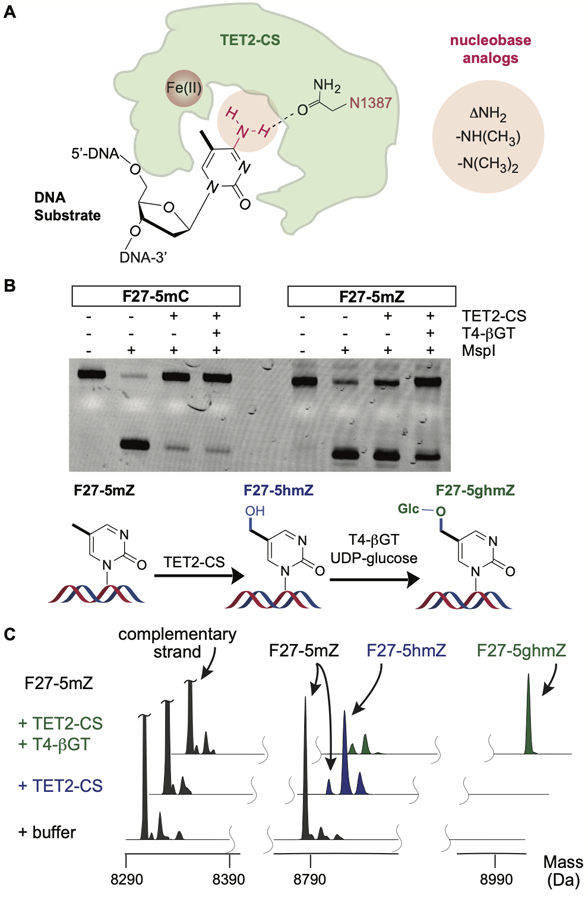Figure 1.

The role of N4 of 5mC in TET-mediated oxidation. (A) The interaction between 5mC and Asn1387 of TET2 is postulated to be critical to reactivity. The N4 interaction can be probed by N4-removal (ΔNH2), as in 5-methylzebularine (5mZ), or via methyl substitution. (B) A 27-mer FAM-labeled substrate with 5mC or 5mZ (200 nM) was reacted with or without TET2 -CS (1.6 µM) in the presence or absence of T4-βGT and the products analyzed on a denaturing gel after cleavage with MspI. While the substrates can be cleaved, modified products are partially or fully protected from MspI cleavage. (C) Spectral traces from ESI-MS analysis of reaction products were normalized to the complementary strand. The product containing 5-glucosyl-hmZ is denoted by F27–5ghmZ.
